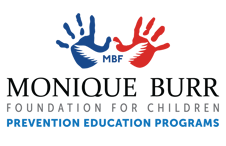How to Navigate the Perils of Social Media as the Parent of a Youth Athlete
February 12, 2020 | Stacy Pendarvis
February 12, 2020 | Stacy Pendarvis

Imagine this…
Your phone rings and you answer it. A voice you’ve never heard says, “Ms. Smith, this is Agent Marks from the FBI and we need to talk to you about your daughter/son.”
An hour later, the doorbell rings and you open the door to find two FBI agents on your front porch. You anxiously invite them in and what they proceed to tell you is like a punch to your core. You learn that your child has been sexually exploited and there are explicit images of them online.
What you learn is like something out of a movie – nothing you would ever imagine happening in real life to your child or you. But now you know…it can happen to you and your child – and it did.
What we’re talking about is online exploitation. There are many types of online exploitation, including grooming, sextortion, live streaming, and curating, manipulating and/or sharing graphic images online.
But imagine…
What if instead of waiting for that call or that knock at the door, you learn the harsh truths associated with social media use and your child posting pictures online. You learn how girls and boys are targeted and manipulated by online predators for sexual exploitation and how those same predators tag and share images with each other. And you learn how to prevent that from ever happening to your child.
As an All Star parent, you are fortunate. The USASF is tackling this global issue and is working to equip owners and coaches, and now parents and athletes, with the knowledge and tools needed to navigate this ever-increasing online danger. We hope this article is just the beginning of you learning about these issues and how to protect your children.
There are many factors contributing to this problem. The wide-spread use of the internet and social media, the anonymity of online users, the ease of sharing images, and the nature of many images now posted online by youth. Images of youth have become hypersexualized and many people have become desensitized to it. The result of all of this is a dramatic increase in sexual abuse and exploitation.
In fact, the National Center for Missing and Exploited Children reported that over 45 million online images and videos of child sexual abuse were flagged in 2018. That’s a huge jump from the 1 million flagged and reported in 2014. Predators are using social media as a breeding ground to groom kids and exchange exploited images between one another. They use hashtags to easily find both images and victims, and they use seemingly innocent photos of children and teens for unintended, sexualized purposes. They also use hashtags as a tool to communicate with kids and with other predators on social media.
Exploitation can happen unintentionally when a youth posts a photo that is easily found and manipulated into something more explicit. The photos are then shared using various websites and specific hashtags. Other times, youth themselves unknowingly share sexual images with predators. This is often part of a grooming process whereby the predator establishes a relationship with a girl or boy and grooms them into thinking they are a safe person. The unintended consequences can be devastating. All youth are at risk, but when talking about youth athletes in particular, many are at an increased risk because they want to be liked and want to gain followers and become online influencers.
But, you and your child can take steps to minimize the risk:
Unfortunately, we can’t be with our children on the web at all times, and there could be a chance that your child’s photos might be exploited. Signs that a child may be the victim of online exploitation (or other dangers) include:
In the event you suspect your child has been exploited online, here are some guidelines to follow:
Talk to your child and ask them to share things that are concerning to them. Let them know you will not judge them, but you just want to help.
If your child receives a sexual image, or if you discover explicit images of your child online, do not repost or share any explicit pictures to tell others of the danger or to report.
Report the image, and website URL to the National Center for Missing and Exploited Children’s Cybertipline at 1-800-THE-LOST or https://report.cybertip.org.
Remember, the best line of defense is to communicate with your child. Honest, open conversations become a two-way street for sharing dangers and behaviors that increase risk and allow your child a safe place and time to discuss their online behaviors with you.
 There are additional dangers youth face such as cyberbullying and dangers from mobile apps, online pornography, gaming, and more. The Monique Burr Foundation for Children (MBF) is proud to partner with USASF to help them protect their youth athletes from bullying, cyberbullying, abuse and exploitation with our MBF Athlete Safety Matters program. The MBF website also has many free resources to help you become better educated and empowered to protect your child from victimization.
There are additional dangers youth face such as cyberbullying and dangers from mobile apps, online pornography, gaming, and more. The Monique Burr Foundation for Children (MBF) is proud to partner with USASF to help them protect their youth athletes from bullying, cyberbullying, abuse and exploitation with our MBF Athlete Safety Matters program. The MBF website also has many free resources to help you become better educated and empowered to protect your child from victimization.
One of those resources is a one-hour online training provided at no cost, Real World Safety: Protecting Youth Online and Off. To access this course, visit our website and click on Learn More/Online Trainings.
Watch this video and then visit the MBF website at www.mbfpreventioneducation.org.
Are you interested in contributing to the Parent Connect Newsletter? Contact Sarah Miller Bate at smbate@usasf.net for more information on sharing YOUR story as an All Star Parent.



The U.S. All Star Federation (USASF) has a mission to support and enrich the lives of our All Star athletes and members. We strive to provide consistent rules and safety guidelines, drive competitive excellence and promote a positive image for the sport. The USASF credentials coaches, certifies legality officials and sanctions events - all with the goal to provide the safest possible environment in which athletes may train and compete. Founded in 2003, we are a not-for-profit corporation established in Tennessee and governed by bylaws, officers, a board of directors and fifteen standing committees.
Copyrights © 2023 All Rights Reserved by the U.S. All Star Federation